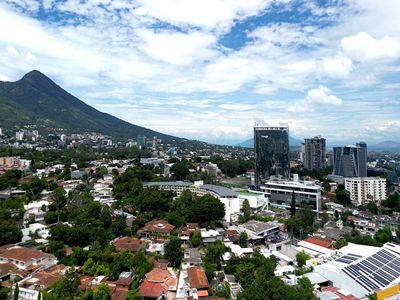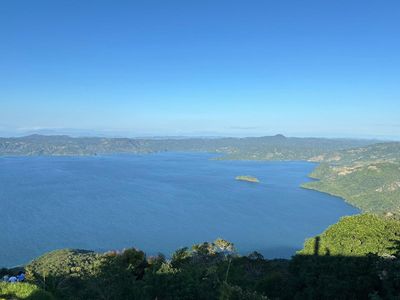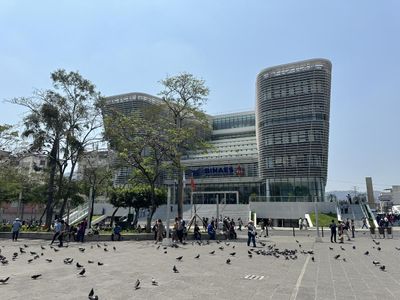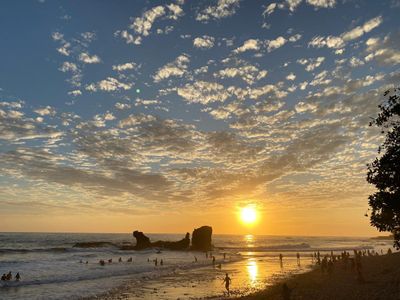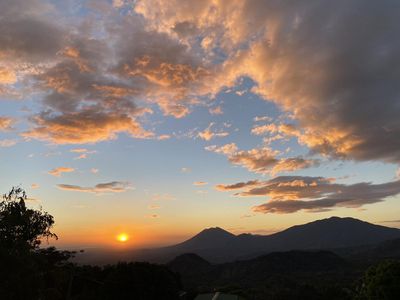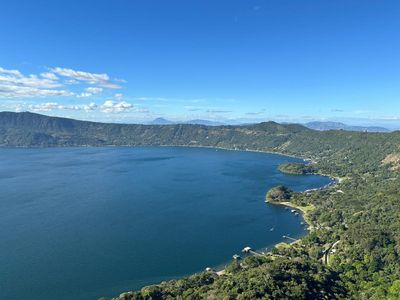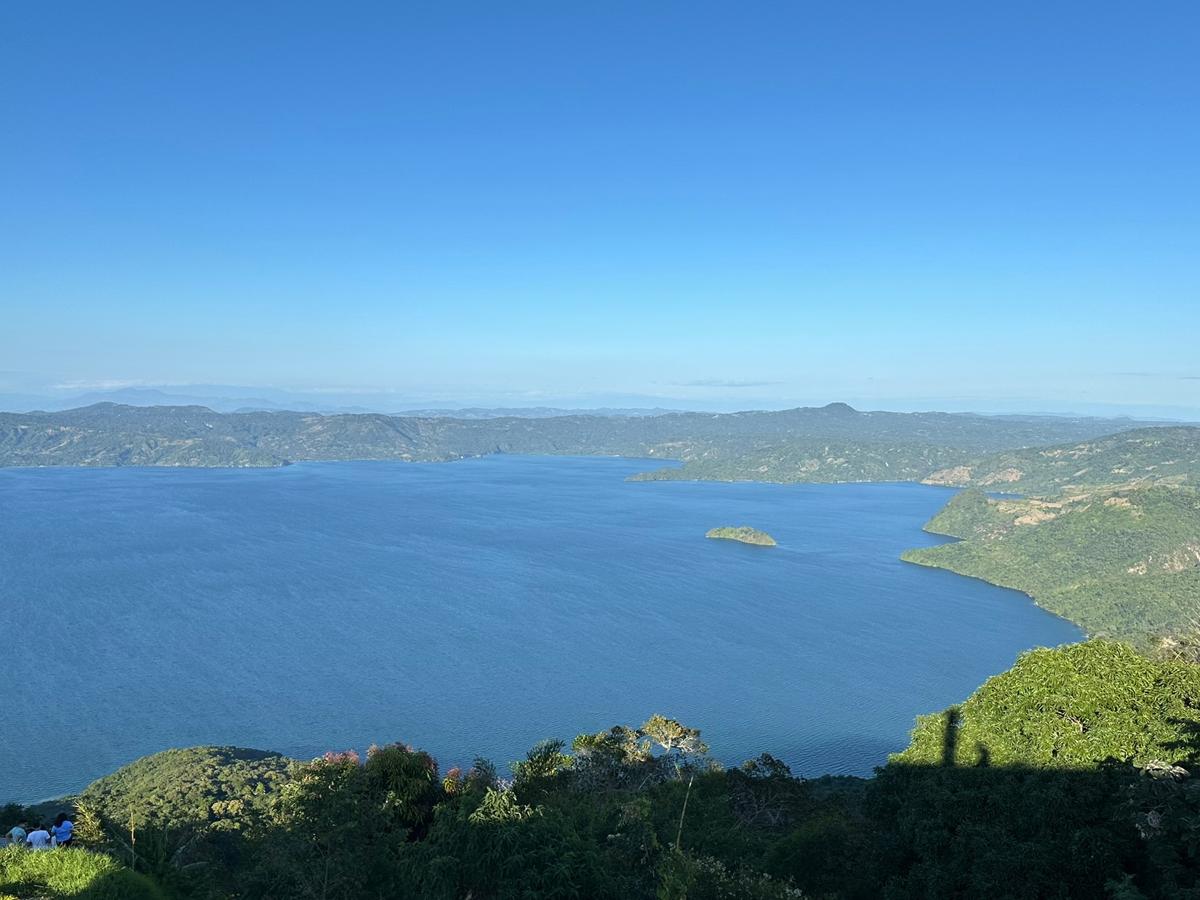
Nestled amidst the verdant landscapes of El Salvador, Lake Ilopango is a captivating spectacle of natural beauty and geological significance. Known for its pristine waters and encompassing volcanic caldera, it is one of Central America's most intriguing natural wonders. With a rich history of volcanic activity, a vital ecosystem, and continued significance for both locals and tourists, Lake Ilopango offers a fascinating glimpse into the dynamic forces that shape our planet.

Lake Ilopango is a caldera lake formed through a series of volcanic eruptions, the most notable of which occurred approximately 1,500 years ago during the late classical period of Mesoamerican civilization. This cataclysmic event, known as the Ilopango eruption, is considered one of the largest volcanic eruptions in Central America in the last 10,000 years. The eruption had far-reaching implications, affecting the climate and resulting in visible ash deposits as far away as Greenland.
The eruption is believed to have caused widespread ecological disruption and societal change in the region. Recent geological studies suggest that the eruption's climatic aftermath may have contributed to shifts in population and settlements among ancient Mesoamerican cultures, including the Maya. Massive pyroclastic flows reshaped the landscape, forming the 72-square-kilometer caldera that now comprises Lake Ilopango. As with many volcanic lakes, its deep and calm waters are a stark contrast to the explosive forces that once molded them.
The Ilopango eruption is distinguished by its Volcanic Explosivity Index (VEI) of 6, which categorizes it as a colossal eruptive event. The Volcanic Explosivity Index is a scale that describes the size of explosive volcanic eruptions based on magnitude and intensity. The numerical scale (from 0 to 8) is a logarithmic scale, and is generally analogous to the Richter and other magnitude scales for the size of earthquakes. Ilopango ranks as one of the most explosive volcanos in the world.

Geological evidence indicates that it was a Plinian eruption, characterized by sustained explosive outbursts that ejected vast amounts of tephra and volcanic gases into the stratosphere. The resulting ash cloud likely induced significant climate anomalies, contributing to a notable drop in global temperatures.
Ash layers from the Ilopango eruption have been discovered across large expanses of the Mesoamerican region, imprinted in archaeological sites and geological deposits. This eruption severely affected agricultural activities, prompting a societal need to adapt and relocate. Evidence of these changes resonates in historical and archaeological studies, offering insight into the resilience of ancient civilizations in the face of natural catastrophes.
Today, Lake Ilopango is a serene and vital geographical feature of El Salvador. The lake itself covers an area of approximately 72 square kilometers and plunges to depths reaching over 230 meters. It is a freshwater lake with water sourced from precipitation and the inflow of several small rivers. The lake basin's volcanic origins contribute to its unique properties, supporting a rich diversity of aquatic life and sustaining nearby communities.
The lake remains an active geothermal area, with the potential for future volcanic activity—though significantly diminished compared to its cataclysmic past. Small fumaroles and hot springs are indicative of subterranean heat, offering both challenges and prospects for future geothermal energy exploration.
Despite its volcanic nature, the lake supports a surprisingly diverse ecosystem. Species such as tilapia and guapote inhabit its waters, providing essential food resources for local fisheries. The surrounding areas are rich with flora and fauna, contributing to biodiversity and functioning as an essential ecological habitat.



Sailing on Lake Ilopango is experiencing a resurgence as enthusiasts work to revive this thrilling aquatic sport in the region. Known for its expansive waters and picturesque surroundings, the lake offers an ideal setting for both amateur and experienced sailors. The captivating volcanic backdrop and consistent winds provide excellent conditions for sailing, attracting individuals eager to navigate its serene waters. Local sailing clubs and community initiatives are playing a pivotal role in promoting the sport, organizing events and workshops to introduce newcomers to sailing while supporting the growing community of dedicated enthusiasts. As interest in this exhilarating pastime continues to rise, Lake Ilopango is poised to become a hub for sailing activities in El Salvador, offering both a scenic escape and an exciting challenge for sailors.

Lake Ilopango is not only a natural wonder but also holds recreational and economic significance for the region. Its tranquil waters and scenic beauty are a magnet for tourists seeking relaxation, adventure, and exploration. Water sports such as kayaking, sailing, and windsurfing are popular activities that attract both locals and international visitors.
Additionally, the lake's ecosystem supports artisanal fisheries, which are crucial to the local economy. Fishing communities have sustainably managed the lake's resources, contributing both to food security and livelihoods. Recent initiatives to protect the lake's environment have seen the introduction of sustainable fishing practices and efforts to reduce pollution, preserving the lake's ecological balance for future generations.
Moreover, tourism around Lake Ilopango provides economic opportunities for nearby communities. Small hotels, restaurants, and tour operators have emerged, offering employment and supporting the local economy. These businesses capitalize on the rich cultural and historical tapestry of the area, providing visitors with immersive experiences that highlight the lake's natural and cultural heritage.
In recent years, Lake Ilopango has witnessed a resurgence in popularity as a tourist destination, thanks to significant improvements in El Salvador's security situation. Previously considered moderately dangerous, the region now welcomes more visitors eager to explore its natural beauty and vibrant culture, unhindered by past safety concerns. This newfound sense of security has allowed tourism to flourish, opening doors to economic growth and increased cultural exchange within the communities surrounding the lake.
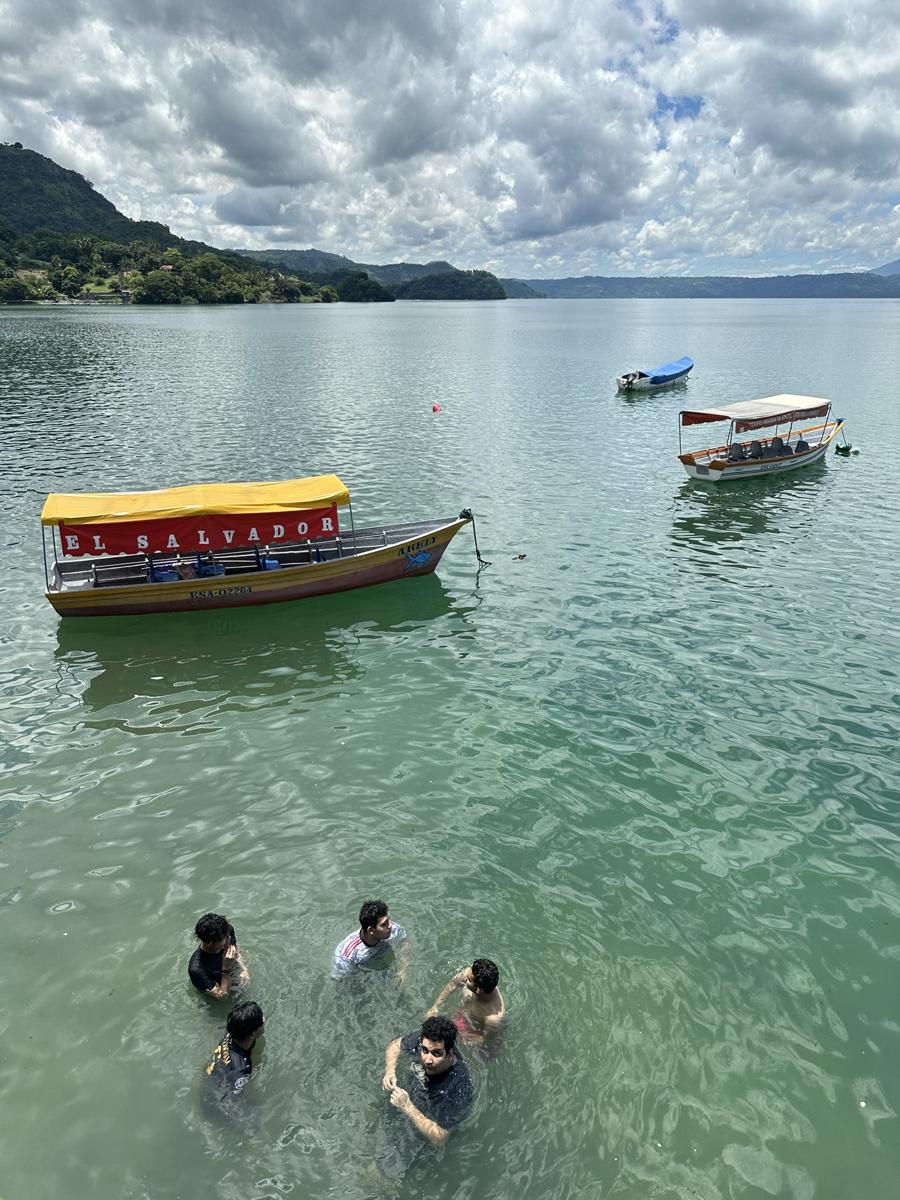

Club Salvadoreño in Corinto is a vibrant social, cultural, and sports association that prides itself on serving its members with a wide array of amenities and activities. With a focus on fostering community and enhancing member experiences, the club offers a comprehensive set of services that cater to a diverse membership. Its online presence, as indicated by the sophisticated design of its website, provides members and prospective visitors information about club offerings, including membership details and the availability of residential properties. The club emphasizes a cohesive blend of social interaction, cultural enrichment, and sportsmanship, embodying a rich tradition of community service and engagement.
Golfing at Club Salvadoreño, located by the picturesque Lake Ilopango in San Salvador, offers a unique blend of challenging play amidst stunning natural beauty. Established in 1956 and designed by the acclaimed architect Fred Hawtree, the club features an 18-hole parkland course renowned for its lush fairways and strategically placed hazards, providing an engaging experience for golfers of all skill levels. With a par of 71 and stretching over 6,685 yards from the gold tee, the course is framed by the tranquil scenery of Lake Ilopango and lined with towering trees. Beyond the golf course, the club boasts impressive facilities, including a clubhouse with a restaurant and bar, swimming pools, beach access, tennis courts, and water sports amenities. Caddie services are required, ensuring a seamless and enjoyable golfing experience. Club Salvadoreño receives high praise for its well-maintained grounds, challenging layout, and friendly staff, making it a favored destination for both members and visiting golfers looking for a memorable day on the links. Whether for a relaxing round of golf or a leisurely day enjoying the club's amenities, Club Salvadoreño offers an exceptional retreat amid El Salvador's natural splendor.
Lake Ilopango and Lake Coatepeque, both volcanic caldera lakes in El Salvador, offer distinct yet captivating experiences for visitors. Lake Coatepeque has been a favored destination for decades, characterized by its well-developed infrastructure, upscale accommodations, and numerous leisure activities. The lake's popularity has led to extensive development, making it a luxurious retreat for both Salvadorans and international tourists.
In contrast, Lake Ilopango remains relatively less developed, offering a more tranquil and natural environment. Its pristine waters and lush surroundings provide an appealing escape for those seeking a peaceful retreat immersed in nature. The charm of Ilopango lies in its unspoiled landscapes and authentic connection to local communities.
One of Ilopango's significant advantages is its proximity to the capital city, San Salvador. With a transit time of just 30 to 45 minutes, it is considerably more accessible than Lake Coatepeque, which is approximately an hour's drive away. This ease of access makes Ilopango an ideal day-trip destination for those looking to experience El Salvador's natural beauty without extensive travel. As tourism continues to grow in the region, Lake Ilopango is poised to develop its potential while maintaining its serene appeal.
Lake Ilopango has not only shaped the natural landscape but also holds immense cultural and historical significance for the people of El Salvador. In ancient times, it was deeply intertwined with Mesoamerican civilizations, serving as a critical resource and spiritual site. The lake is said to have featured prominently in local myths and legends, symbolizing creation, destruction, and renewal in the narratives of indigenous communities.
Archaeological research around the lake continues to reveal insights into its past. The surrounding region is scattered with pre-Columbian artifacts, remnants of past civilizations that thrived despite the environmental challenges posed by the region's volatile geology. This temporal connection between the lake and human history fosters a profound appreciation for its enduring presence and impact.
Like many natural wonders, Lake Ilopango faces various environmental challenges that threaten its ecological integrity and sustainability. Issues such as pollution, deforestation, and unregulated development around the lake's perimeter pose significant risks to its health and longevity. Contaminants from agricultural runoff and waste disposal can degrade water quality, leading to negative impacts on the ecosystem and local communities reliant on the lake.
To combat these threats, conservation efforts have been initiated by government agencies, local communities, and environmental organizations. Sustainable land management practices, reforestation projects, and environmental education programs are among the strategies employed to protect and preserve Lake Ilopango. Through collaboration and advocacy, these initiatives aim to safeguard the lake's natural beauty and resources for future generations.
In October 2024, the Salvadoran government, through the Agency for Development and Design of the Nation (ADDN), is spearheading a major initiative to ensure the sustainable development and conservation of Lake Ilopango. The project is led by Dave Rivard, who collaborates with federal institutions, local governments, PROLAGO and landowners to safeguard the lake's ecosystems while fostering responsible economic growth. The effort, part of the "Partnerships for Survival in the 21st Century," aims to create an integrated watershed management plan benefiting over 400,000 residents across eight municipalities. The initiative includes technical assistance from PROLAGO and focuses on sustainable territorial planning of the lake's wetlands. By consolidating efforts from various stakeholders and utilizing recent scientific studies, the initiative seeks to establish a governance mechanism for balanced environmental protection and regional economic development.

The future of Lake Ilopango rests on the delicate balance between sustainable development and conservation. While its geological activity renders it a subject of scientific interest and potential geothermal exploration, environmental stewardship will be key to ensuring its preservation. By fostering an understanding of the lake's natural properties and historical significance, El Salvador can leverage Lake Ilopango as both a natural asset and a symbol of resilience, adapting to the ever-evolving interplay between humanity and nature.
As climate change and increasing development pressures threaten sensitive ecosystems globally, Lake Ilopango serves as a poignant reminder of the dynamic and interconnected nature of our world. Its deep caldera waters and verdant surroundings beckon not only as a place of recreation and economic opportunity but also as a critical part of El Salvador's natural heritage, deserving cherishment and protection.
In summary, Lake Ilopango stands as a remarkable testament to nature’s power and adaptability. Its volcanic origins and historical eruptions illustrate both the transformative and the sustaining aspects of natural forces. As efforts to preserve its unique ecology and rich cultural history continue, Lake Ilopango remains a vital and vibrant part of El Salvador's landscape, embodying the resilience and beauty that characterize the nation's identity.

Sam Martinez
I am a dedicated and passionate real estate professional with more than a decade experience in the real estate market.Explore our latest blog posts

